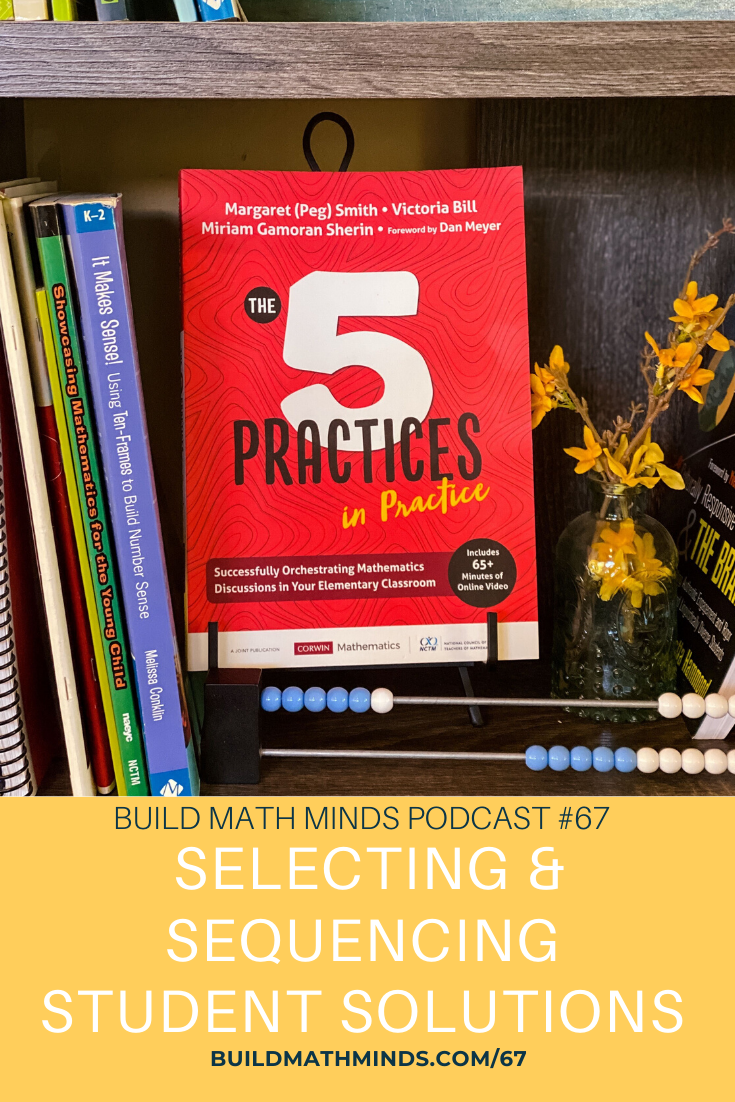Resources mentioned in this episode:
The 5 Practices series of books
Build Math Minds Podcast Episode #13: Orchestrating Productive Mathematics Discussions
Register for the Build Math Minds Virtual Summit
I’m so excited that Peg Smith is presenting at the upcoming Build Math Minds Virtual Math Summit! Have you registered yet??
So, Peg is a co-author of multiple books about The 5 Practices.
Now, here is why I’m so excited Peg is presenting at this year’s Virtual Math Summit and why I can’t wait for you to learn from her . When I first started letting my students solve problems on their own and then coming together to have them share their solutions, I did it completely wrong.
When it came time for the sharing, I would randomly let kids share and one of two things typically happened. Sometimes I would get kids who shared something that was way above what the majority of my students were ready for. But most of the time, the thing that happened was: I would let anyone and everyone share. It could drag on for 20+ minutes with all these different ways kids solved the problem and by the end of it, most of the students looked thoroughly confused.
I didn’t know how else to do it, but I knew what I was doing wasn’t as effective as I wanted it to be.
It wasn’t until I read the 5 Practices book that I realized what needed to change. Back in Episode 13 of this podcast I talked about the original book, but today I’d like to read from the new series Peg has co-authored called The 5 Practices in Practice. There is one for Elementary, one for Middle, and one for High School.
So if you have ever struggled with making that sharing time as productive as possible, there are 5 Practices (hence the title) that you can do to ensure that time is productive. For me there were two of the five that had a huge impact: Selecting & Sequencing. When I learned about selecting & sequencing student solutions during the share time, it was a game-changer. On page 103 of the Elementary 5 Practices in Practice book, they write:
“To help ensure that the discussion is meaningful for all students, you will want to engage in the next two practices, selecting and sequencing student solutions.
Selecting and sequencing builds on the careful monitoring you did as students worked on the task. These practices involve choosing which solutions will be shared with the class, who will share those solutions, and the order in which the solutions will be shared. Selecting particular solutions to highlight provides you with an opportunity to help students move beyond the specific strategies they used to consider other approaches. In addition, being intentional about the order in which the solutions are presented provides an opportunity to build strategically on what students have done.”
What I love about the 5 Practices in Practice book is that it gives so much information and so many examples about what each practice is and looks like in an elementary classroom.
If you are wanting to dig deeper into the 5 Practices and read examples of how teachers have implemented them, please go get the book and learn straight from the source. Don’t forget you can get free training from one of the co-authors, Peg Smith this summer at the Build Math Minds Virtual Math Summit.
Subscribe and Review in iTunes
While you’re there, don’t forget to leave a review on iTunes too. I would love to know your thoughts and how we can make sure that we give you content that you will really enjoy.
To leave a review, head over to iTunes and click on “Ratings and Reviews” and “Write a Review.” I can’t wait to hear your thoughts about the podcast.




